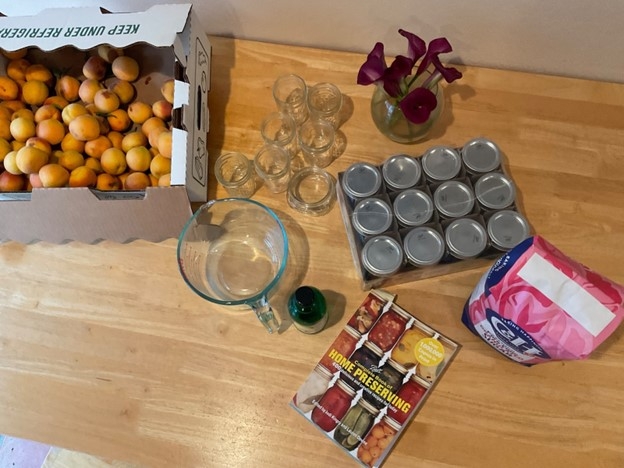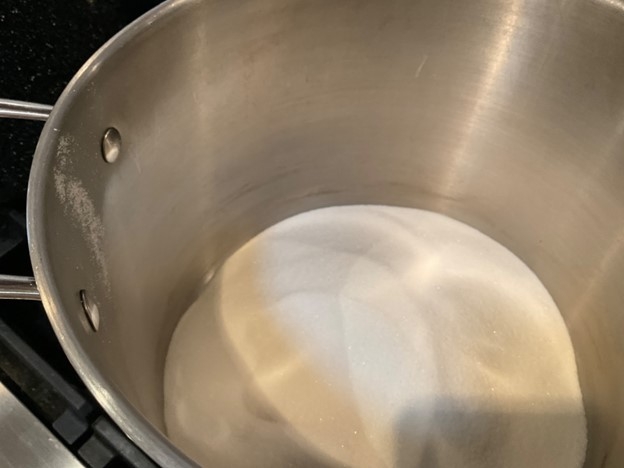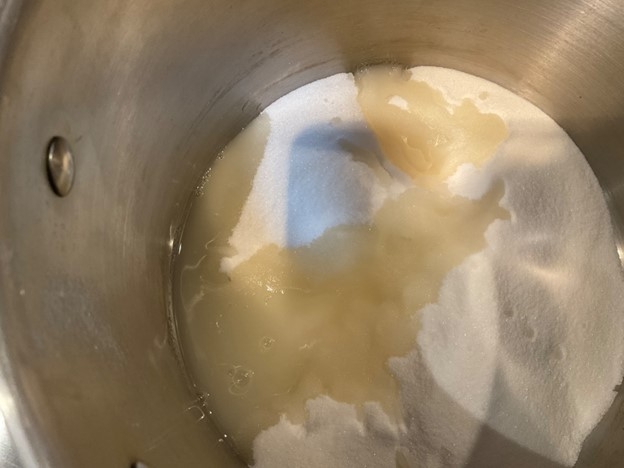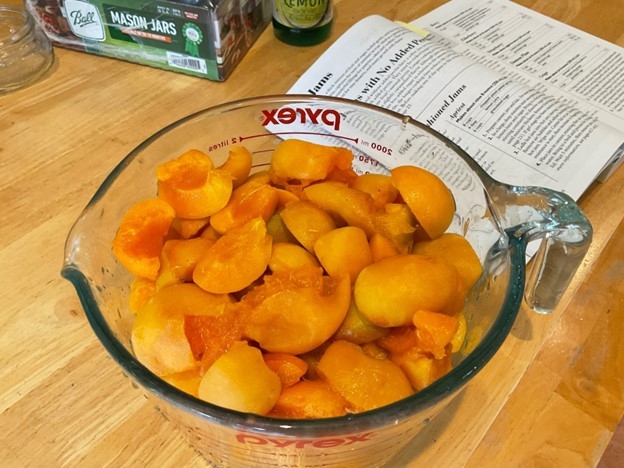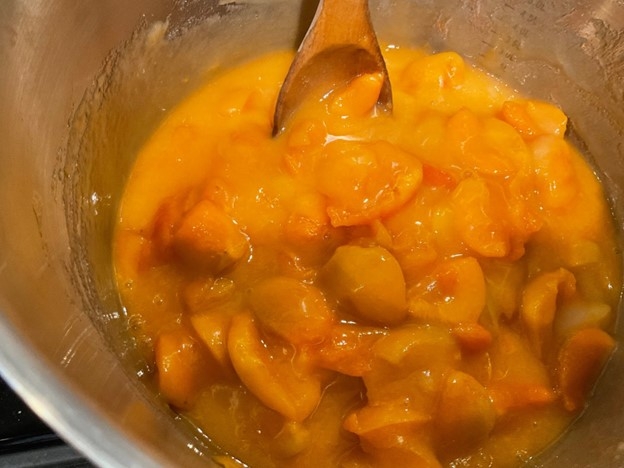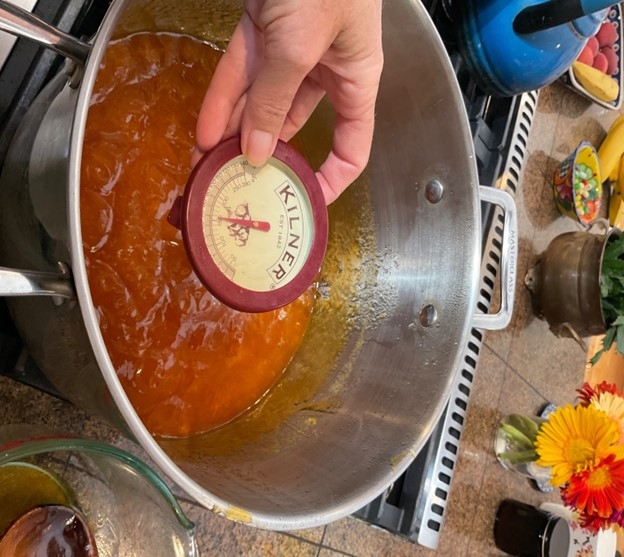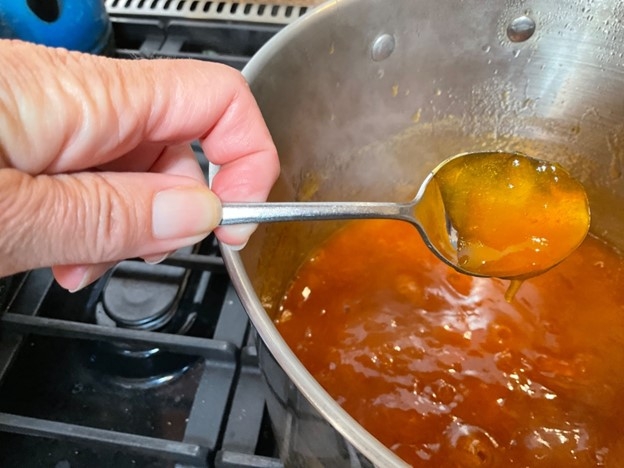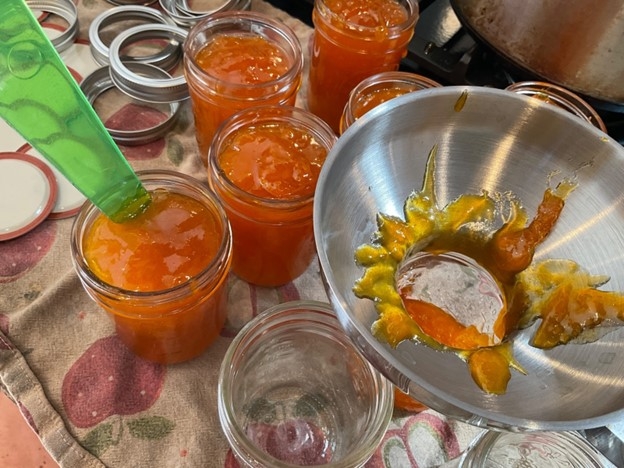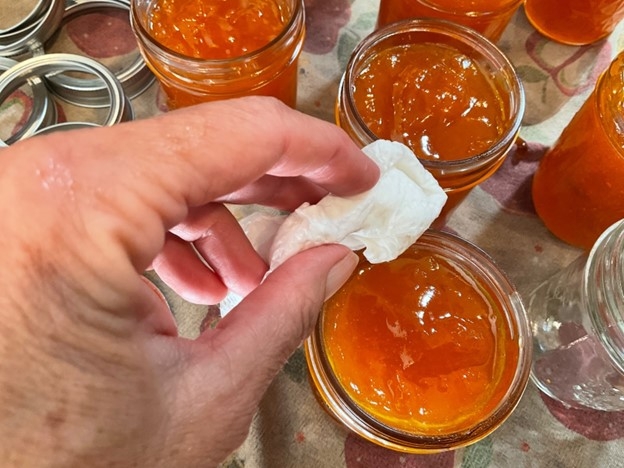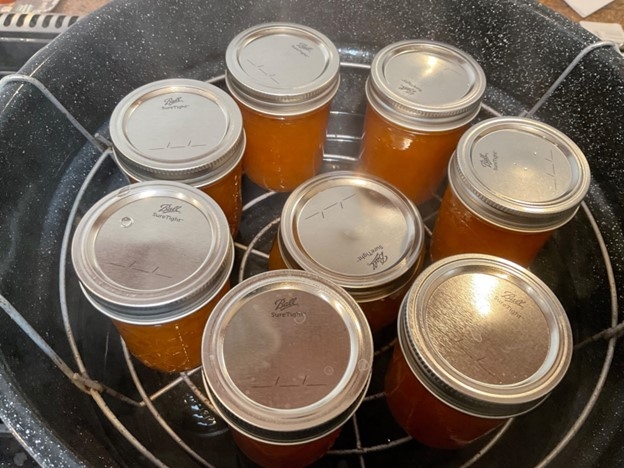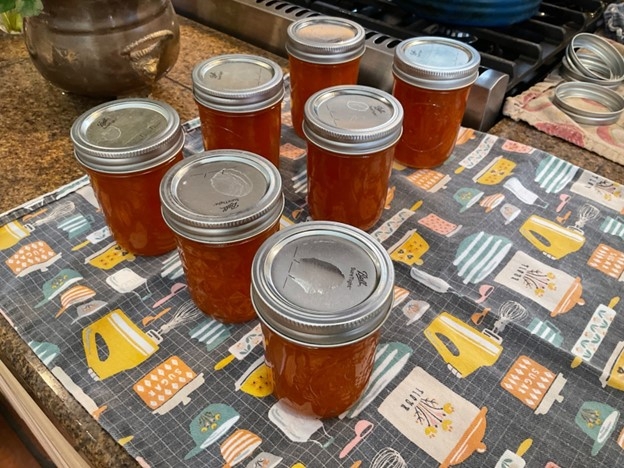It's that time of year again! The dominant variety of apricots, Blenheim, that have a short season here on the Central Coast, have arrived. I used to have a Royal apricot tree in my yard and made delicious jam every year. Unfortunately, it contracted a fungal disease and slowly lost its limbs one by one which ended my annual tradition of making jam.
Last year, I wanted to bring this jam making tradition back so now I purchase my Blenheim apricots from my local farmer's market. The farmers there have been growing apricots for years and they have some of the tastiest ones around.
First, gather your ingredients and canning supplies. This recipe makes about nine 8-ounce jars and you will need 8 cups chopped and pitted apricots, 4 tablespoons of lemon juice, and 6 cups granulated sugar. Make sure your cooking space is clean and wash your hands.
I decided on a simple no-pectin recipe from the Ball Complete Book of Home Preserving (2006) so the pure delicious flavor of the apricots could shine through.
I like to listen to music while I jam, mostly bluegrass, but any music will enhance your experience and help pass the long minutes of stirring the pot when you choose the long boil, no pectin method.
I washed and dried and chopped the apricots, removing any blemishes and getting rid of any damaged pieces. You want a mix of about ¾ ripe to ¼ under-ripe apricots since the latter contain more natural pectin to help the jam set. Prepare fruit in small batches, just enough for one recipe for best results. For my second batch, I chopped the apricots in smaller pieces and ended up with more fruit in my recipe.
In a large saucepan, combine the sugar, lemon juice and the apricots. I let this mixture sit for about a half hour as the fruit begins to release its juices and starts to form a syrup. This helps prevent sticking as you heat the mixture over medium heat.
Add 6 cups of granulated sugar.
Add 4 Tablespoons of lemon juice. The juice needs to be from a bottle purchased at the store. This is a guarantee that the juice will have the right pH, at least 4.5 percent acidity whereas freshly picked lemons can vary in their pH.
Add the 8 cups of chopped apricots. Although the recipe calls for peeling the apricots, I leave the skins on and end up with a smooth jam.
Stir the pot occasionally to help the sugar dissolve and keep the mixture from sticking. Once the mixture has broken down and begins to thicken you need to stir constantly as it boils. This is where your favorite music or a good podcast comes into play.
I decided to use the temperature test since it is the most accurate way to see if the gel stage of the jam has been reached (Ball Book, 2006, pg. 21). After cooking for an hour, the jam reached only 210 degrees, so I decided to try the sheet test with a spoon that had been in the freezer for several minutes. The jam came off the spoon in sheets, so I decided to ladle into the hot jars. The second batch of jam did reach 220 degrees after only about 45 minutes as I boiled this one a little harder. Interestingly, the first batch which was cooked longer turned a darker shade of orange while the second batch was brighter.
Spoon or sheet test: Dip a cool metal spoon into the boiling jam. Lift the spoon up and out of the steam so it starts to fall off the spoon. If the jam forms light and syrupy drips, keep boiling. If the jam comes off in one sheet, the jam is ready to place into hot jars.
Ladle the hot jam into half-pint jars leaving a ¼ inch headspace. Use a debubbler or chopstick to release any air bubbles that may have formed.
This jam is very sticky so make sure the rim is wiped clean with a damp paper towel before placing the lid on the jar.
Place the lids on the rims and screw on the bands just until fingertip tight.
Set filled jars onto a canning rack and submerge into a water bath canner with 2-3 inches of water covering the tops of the jars. Bring to a full rolling boil and process for 10 minutes. After 10 minutes, turn off heat, remove the lid and let the jars stand in the canner for 5 minutes before removing the jars to a clean towel on your counter. Be sure not to tip the jars as you are removing them as the mixture could bubble under the lid and cause the lids not to seal properly.
Let the jars stand 24 hours before checking that they are sealed properly. Place any unsealed jars into the refrigerator immediately. Store jars in a cool dark location after removing the bands. By removing the bands, you will be able to notice if at any time during storage the lids become unsealed and thus not edible.
To remove water stains on lids before marking the type and date of jam, take a cloth dipped in vinegar and wipe the lid.
In the second batch I made, I placed one cinnamon stick to add a little flavor. You can also add a vanilla bean or the apricot kernels in a stainless-steel tea strainer to compliment the flavor of the apricots. You can safely add up to 1 teaspoon of flavoring or herb to a jam or jelly recipe.
Because the Blenheim apricot season is so short, making jam is a great way to savor this flavor year-round and your friends will be happy when you bring over a jar of this delicious fruit. Enjoy!
Apricot Jam Recipe from the Ball Complete Book of Home Preserving copyright 2006, page 22.
